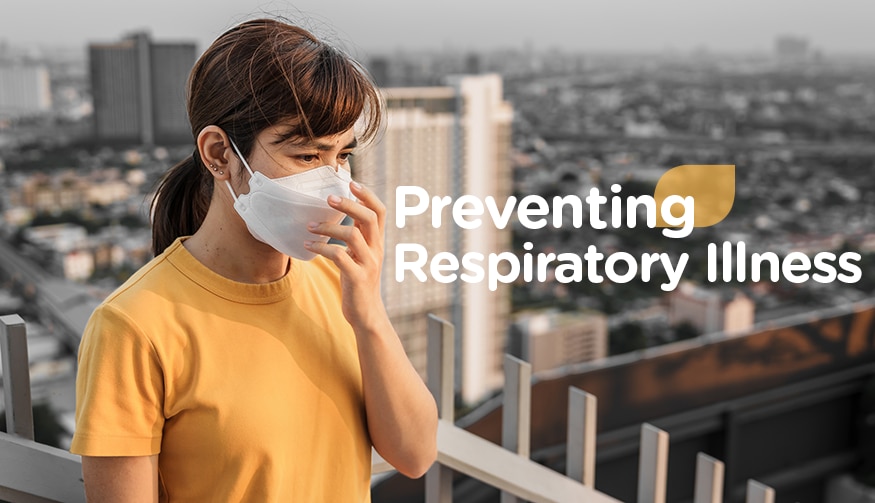Respiratory Illness is one of the biggest causes of death. * You may ask what respiratory illness is? Respiratory diseases encompass a range of conditions that specifically target the lungs and other components of the respiratory system. These diseases can be triggered by various factors, including infections, tobacco smoking, exposure to secondhand smoke, inhalation of pollutants like radon or asbestos, and other forms of air pollution. Common examples of respiratory diseases include asthma, chronic obstructive pulmonary disease (COPD), pulmonary fibrosis, pneumonia, and lung cancer. They are also referred to as lung disorders or pulmonary diseases. @

Preventing respiratory illnesses requires a comprehensive approach that involves adopting healthy habits and following established guidelines. In this article, we will explore some key steps you can take to protect your respiratory health.
When necessary, it is essential to seek advice from qualified healthcare professionals.
1.Immunizations

Immunizations play a vital role in equipping your body to defend itself against viruses and serious illnesses. They work by educating your immune system about the appearance of specific viruses, enabling it to prepare for future encounters and provide protection. Some immunizations directly supply your body with antibodies to safeguard against the virus. While receiving vaccinations can decrease the likelihood of infection to some extent, their primary effectiveness lies in preventing severe illness and fatalities.
2.Keep up with hygiene

Taking measures to cover your coughs and sneezes is crucial in minimizing the spread of germs and protecting others. Regular handwashing with soap effectively eliminates germs from your hands, reducing the chances of infection when you touch your eyes, nose, or mouth. In situations where soap and water are unavailable, using a hand sanitizer containing a minimum of 60 percent alcohol can effectively kill these germs. Additionally, to eliminate germs and dirt from surfaces, it is recommended to use household cleaners that contain soap or detergent.
3.Wear a mask

Masks can serve as filters to reduce the inhalation or exhalation of germs. Their effectiveness may vary depending on the specific virus, such as its size. When worn by individuals who are infected with a virus, masks can help minimize the risk of spreading it to others. Additionally, masks can provide protection to the wearer by preventing the inhalation of germs, particularly when using well-fitted masks.
4.Physical Distancing

Infectious droplets and particles tend to accumulate in closer proximity to the person releasing them. Therefore, the closer you are to an individual with a respiratory virus, the higher the likelihood of contracting it. It is advisable to stay away from individuals exhibiting symptoms of a respiratory virus. Furthermore, it is recommended to avoid crowded areas where maintaining physical distance.
5.Fresh air

Certain germs have the ability to spread through the air between individuals. This transmission is particularly prevalent in indoor settings that are crowded and have inadequate airflow. To minimize the risk of exposure, it is beneficial to enhance air quality by improving airflow, purifying the air, or choosing outdoor gatherings whenever possible. Shifting activities outdoors, where airflow is optimal, can be an effective measure.
Source:
* Respiratory Illness is one of the biggest causes of death : https://www.cdc.gov/nchs/fastats/leading-causes-of-death.htm
@ What respiratory illness is: https://www.cancer.gov/publications/dictionaries/cancer-terms/def/respiratory-disease
Immunizations:
https://www.cdc.gov/respiratory-viruses/prevention/immunizations.html
Wear a mask:
https://www.cdc.gov/respiratory-viruses/prevention/masks.html
Keep up with hygiene:
https://www.cdc.gov/respiratory-viruses/prevention/hygiene.html
Physical Distancing:
https://www.cdc.gov/respiratory-viruses/prevention/physical-distancing.html
Fresh air:
https://www.cdc.gov/respiratory-viruses/prevention/air-quality.html








